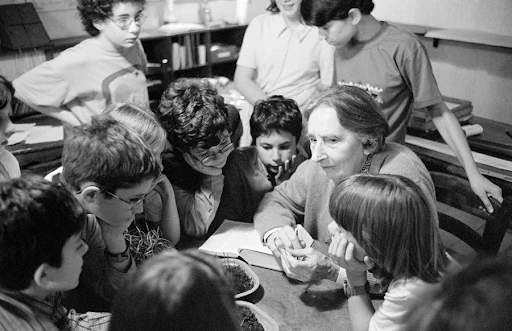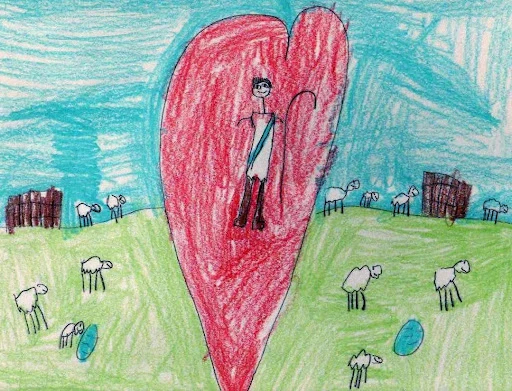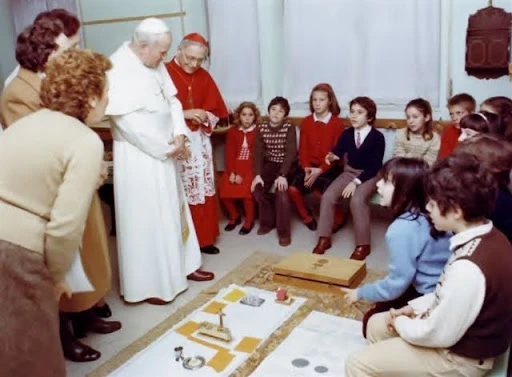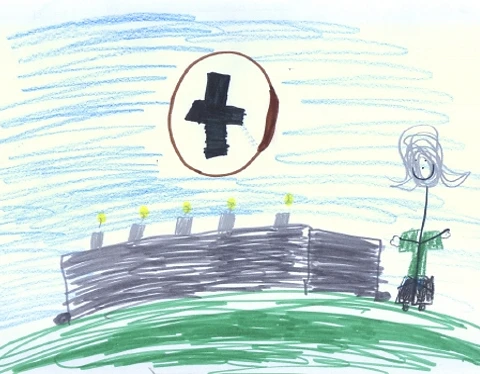CNA Staff, Aug 18, 2024 / 06:00 am
This month, Catechesis of the Good Shepherd (CGS), a method of catechetical learning for young students inspired by Montessori-style education, celebrates 70 years since its founding and 40 years as an official organization in the U.S.
Founded by Sofia Cavalletti and inspired by the education style of Catholic educator Maria Montessori, CGS catechizes toddlers to 12-year-olds by appealing to the child’s developmental age and placing a strong focus on the child’s relationship with God.
The budding organization CGSUSA has grown since its establishment in the U.S. in 1984, expanding to include Orthodox Christians, Episcopalians, and other Christian churches that want to incorporate the attentive, creative, relationship-based way of teaching children about God.
In the U.S., there are more than 6,500 “atria,” or classrooms, prepared according to the developmental needs of the child, with three central offices in Arizona, Georgia, and Iowa.

CGSUSA has 4,700 active members from 21 different Christian traditions. Members and catechists serve an estimated 75,000 children.
Little-sized rooms for little ones
CGS spaces are designed for the needs of each age group, whether they are 16- to 30-month-olds, 3- to 6-year-olds, 6- to 9-year-olds, or 9- to 12-year-olds.
“The Catechesis of the Good Shepherd offers the child a place and time to be with God,” said Mary Mirrione, the national director of CGSUSA.
“We have a lot of care and a lot of time that goes into the formation of the catechist, the adults who are in that room with the children,” she told CNA in a Zoom call. “But that room is prepared in such a way that everything in the room points to God and is a doorway to the mystery of God that the child can enter.”
The rooms feature child-sized furniture, depending on the age range the classroom is designated for. The artwork is displayed at the height of the child, and bookshelves are easily accessible. Religiously-themed activities are projects available for the children, such as tactile liturgical calendars, maps of the Holy Land, and a liturgy area featuring a mini altar.
“We have a beautiful small set of everything they see at Mass, and we help them with the names because they’re fascinated with names as they’re learning how to speak,” she explained.
CGS focuses on a different aspect of God through different classroom activities and decorations as well as parables, depending on the age of the child.
The name for the classrooms, “atria” (“atrium” for a single classroom) are taken from the space between the Church and the outside world.
Catechists prioritize the relationship of the child with God rather than just factual learning, emphasizing parables such as the good shepherd and the prodigal son.
“It’s not a subject, it’s a Person,” Mirrione said. “It’s not knowledge they’re gaining, it’s a relationship they’re enjoying — and of course, they receive knowledge in that enjoyment.”
(Story continues below)

“By nature of being his child, and in the fullness of their baptism, [the children] have a relationship with God that is between them and God,” she said. “The only people allowed in their soul is them and God. The rest of us, we can serve that, and we can serve that well, but we need to see who they are to do that.”
Founding and growth
Cavalletti and Gianna Gobbi founded CGS in Rome by taking inspiration from the Church and Montessori-style education.
Cavalletti, a biblical scholar and theologian, was asked by a friend to give catechesis to her young children. Although she initially said she didn’t know anything about children, Cavalletti was drawn by their unique perspectives. Taking inspiration from the rabbinical way of reading Scripture, to which she was accustomed, she joined forces with Montessori educator Gobbi and developed CGS.
“They began an experiment, a Montessori experiment, in a prepared environment,” Mirrione said.
They decided to call the classroom space an atrium, named for the space between the world and the church.
“At St. Peter’s, there’s that space there, and there’s these huge golden doors with the life of Christ on them — that’s the atrium,” she explained. “St. Paul Outside the Walls, there’s a huge atrium there for the catechumenate, because that’s where the catechumenate would learn about the faith, and that was that space in between.”
The organization grew, and Pope John Paul II made a pastoral visit to a CGS group at Our Lady of Lourdes Parish in Italy on Feb. 13, 1983, while the children were working with the catechists.
“He approached each group and listened attentively, then asked a question and then listened again, amazed and touched by the children’s responses,” Mirrione told CNA in an email. “At the conclusion of his visit, he told Sofia and the catechists from the atrium that he had never heard such a good homily and that it was proof the kingdom of heaven belongs to the children.”

Adapting for special needs
CGS can be ideal for children with special needs, particularly for children who are on the autism spectrum or have Down syndrome. Catechists are eager to collaborate with families.
“Because it is a prepared environment, there are certain preparations we can make for, like we have had children who are deaf or children who are blind,” she said. “We have many children on the autism spectrum, many children with Down syndrome.”
Giving children the freedom to move at their own pace, already a principle for CGS, can be especially helpful for children with special needs, Mirrione explained.
“Sometimes for, say, children on the autism spectrum, it can be as simple as we turn off the ceiling lights because we have lamps, we have soft lighting in the room. Sometimes it’s as simple as that, and other times it really is just giving them the space and time they need.”
Mirrione recalled one young student who was nonverbal and would come to CGS classes with a respite worker. Not knowing what to expect at first, she found they worked well together.
“He ended up being our prayer leader because he had an innate sense of time, I think,” she recalled. “He always knew when it was almost time for closing prayer, and he would go to the opposite end of the room from the prayer table.”
The student would sing one word of the song, “always,” and the other children would gather around the prayer table to join in and sing “the Lord is my shepherd, I’ll walk with him always.”
“We would sing the rest of the song with him because he could sing one word of it, and he always led the song, every week,” she said.

Growth
This year, CGSUSA is celebrating nearly 5,000 active members who help run or support CGS locations across the nation, 40 years as an association, and 70 years of CGS. The organization certifies more than 2,200 catechists each year, and catechists volunteer an estimated total of 20,000 hours each month.
“It just took us a while to become an association because we’re still small. We’ve always been small,” Mirrione explained. “But this year, we’re also celebrating, and it delights my heart, we have almost 5,000 members.”
Mirrione has directed the organization for more than 27 years and worked in catechesis since the early 1990s.
She explained that she began taking CGS classes upon the request of her pastor and then felt a personal connection to it.
“However, in going through the coursework from the very first day, just being called by name into this very precious place that’s like a retreat house for children, it really caught my attention and my heart,” she recalled. “The Gospel is claimed in such an essential manner.”
“We say that our foundations are Scripture, liturgy, and the child, the human person in front of us,” she continued. “And that, in its simplicity, really is deeply profound.”
“For instance, one of the children’s favorite parables is the kingdom of heaven is like a mustard seed, so tiny when it is sown, but it grows so big that the birds will shelter in a chase,” she explained.
“Jesus was speaking about Jerusalem mustard seeds, which I think, unless you see them, you don’t know how tiny [they are] — they’re so tiny! And when you walk in Bethany, you crunch on them. It would have been so present to the people of his time.”






